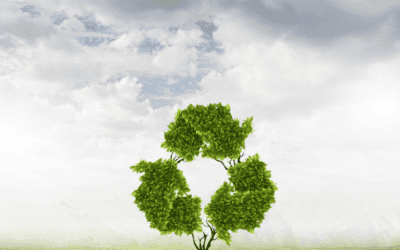Our work is all about encouraging governments, businesses and individuals to think more sustainably. We talk a lot about the circular economy – where products are made using existing materials and where reuse or recycling helps to keep products and materials in use for longer.
Fundamental to this economic shift is a change in the way we design things. Where we’ve been used to a ‘cradle to grave’ approach, we now need to focus on a ‘cradle to cradle’ way of designing and manufacturing.
This is a big mindset shift for most – but many companies are already working this way, and have adjusted the materials and processes they use. In addition, they are spending more time thinking about the potential lifespan of their products, and how they can actively influence what happens to those products once the original user has finished with them.
Transforming design
It’s true that you can’t move to a circular design model overnight. In fact, the Ellen MacArthur Foundation suggests an ‘adaptive’ approach to circular design, where designers and companies take a strategic look at six key parts of the design process and start to make changes that will have the right impact. These are:
- Observe and interpret the current system
- Envision a circular future
- Create the conditions for collaboration
- Bring circular design capabilities on board
- Rewrite your design rules
- Develop tools to design and evaluate
What does this mean? It means that you must take serious, detailed steps to transform your design process, if you want a truly sustainable outcome. It means being honest about the things you could do better, and investing in the people and tools that will help you to reach your goal.
Circular design is about innovation and creativity. It doesn’t mean you have to lose your competitive edge – in fact, in a world where authentic sustainable design is in demand, you could strengthen your market position and become a leader in your field.
For many businesses, it’s a complete sea-change in thinking. So it’s daunting, and it feels like a risk – it’s almost certainly going to require some investment. So why do it?
Why circular design matters
If we are to stop plundering the dwindling natural resources on our planet, we need to be able to make use of the materials already in existence. It’s a simple proposition at heart – the more we can reuse, the less we throw away and the less we have to mine for brand new materials. That reduces our impact on the planet at both ends of the scale.
To do this, however, we need to harness the creativity, imagination and expertise of product designers. And we need to support them to be bold – to think about design in a completely new way, and to experiment to see what works and what doesn’t. This includes thinking about:
How can I use materials differently?
There’s not a ‘one-size-fits-all’ solution to this – and some products, by their nature, may not be able to use fully reusable or recyclable products. But perhaps materials that are currently completely unusable at the end of life might themselves be designed or created differently to help products be a little more sustainable.
For other materials – what are you using now that’s actually superfluous to the design? What could you change to reduce the amount of plastic you use? What about your approach to packaging? How could you evolve your design to reuse existing materials rather than start with something brand new?
And what happens to those materials at the end of the product’s life? How can they be separated and managed, so they don’t end up in landfill?
How do your customers behave?
We know that consumer behaviour is critical to improving sustainability. It’s a fact that you can design 100% recycled products, but if your customers’ behaviour is to throw things in the bin, that won’t matter at all.
So part of your circular design process needs to be a deep-dive into your customers. The way they view your products and the way they use your products will inform some of your decisions. And perhaps as you change your design, you also need to plan how you are going to communicate with your customers to let them know what you’re doing, and make it clear how they can help.
What’s practical?
There have been examples over the years of companies that have introduced products that seem like a great idea on paper, but don’t work in practice. Part of any product design strategy is the functionality of your product. And if you’re redesigning an existing product, you need to know what the end-user expectations are.
Making the transition too quickly to satisfy short-term goals can often backfire. You need to design, prototype and thoroughly test a new design, so that you can be sure it will fulfil its practical requirements. Move too quickly and you’ll actually end up being less sustainable in the long run.
Start with the end in mind
What is your end goal? Ideally, it should be to incorporate as much reusable materials in your product as possible, and make it easy to reuse or recycle those products at the end of life, so they can go back into the materials stream.
When you make this your priority, your design focus changes. Think of your design work as driving the change – not reacting to it. That way, you can encourage broader thinking and real innovation that will in turn drive similar thinking in your market.
Make a public commitment to change
Of course, your design work is part of a commercial enterprise. Your goal is to make money – but that doesn’t have to be at the expense of the planet. Revisit your vision, mission and values, talk to your customers, suppliers and even your competitors. Be clear about what you are changing and why.
Making a public commitment is part of the process. It gives your design teams an incentive to think laterally about what they need to change, and it shows your stakeholders that you’re serious about change. It also gives you the opportunity to work with your customers, suppliers, retailers and other key partners to tell your story before your product is ready. That will put you ahead of the game and demonstrate that you’re putting circular design at the core of your business.
You can find out more about WR1 and the way it can help businesses profitably switch to a circular economy model here.






